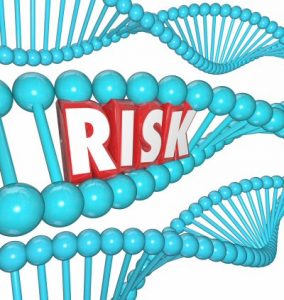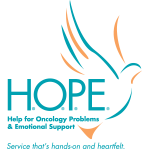The Latest in Cancer Screening: Genetic Testing
 The Latest in Cancer Screening: Genetic Testing
The Latest in Cancer Screening: Genetic Testing
By: Jean Lillquist
genetic testing for cancer Twenty years ago a discovery was made that revolutionized the approach to cancer. The BRCA1 gene, which was linked to an increased risk for breast and ovarian cancer, was discovered. Ten years after that, in 2003, the Human Genome Project was completed. Scientists sequenced the three billion letters in the human genome, which is the complete set of DNA in the human body. From this over 1,000 disease genes have been discovered, 2,000 genetic tests created, and at least 350 biotechnology-based products are currently in clinical trials. Today’s researchers can find a gene suspected of causing an inherited disease in a matter of days, rather than the years it took before the genome sequence was in hand.
We all carry certain genes that are normally protective against cancer – they correct any DNA damage that naturally occurs when cells divide. Inheriting faulty versions or ‘variants’ of these genes significantly raises the risk of developing cancer, because the altered genes cannot repair the damaged cells, which can build up and form a tumor. BRCA1 and BRCA2 are two examples of genes that raise the cancer risk if they become altered. Having a variant BRCA gene greatly increases a woman’s chance of developing breast and ovarian cancer. They also increase a man’s chance of developing breast cancer and prostate cancer.
BRCA genes are not the only cancer risk genes.
Researchers have identified more than 100 new gene variants associated with an increased risk of breast, prostate, ovarian, and thyroid cancer. Individually, these new gene variants only slightly increase the risk of cancer, but a combination could mean a high risk overall. It is becoming increasingly common for doctors to recommend genetic testing for patients who might be at risk for a cancer caused by inherited gene mutations.
Criteria to Consider Before Genetic Testing for Cancer
Many experts recommend that genetic testing for cancer should be strongly considered when all three of the following criteria are met:
- The person being tested has a personal or family history that suggests an inherited cancer risk condition.
- The test results can be adequately interpreted (that is, they can clearly tell whether a specific genetic change is present or absent).
- The results provide information that will help guide a person’s future medical care.
Should You Speak With a Professional?
It is strongly recommended that a person who is considering genetic testing speak with a professional trained in genetics before deciding whether to be tested. These professionals can include doctors, genetic counselors, and other health care providers such as nurses, psychologists, or social worker. Genetic testing includes a detailed review of the individual’s personal and family medical history related to possible cancer risk. Genetic tests are usually requested by a person’s doctor or other health care provider. Although it may be possible to obtain some genetic tests without a health care provider’s order, this approach is not recommended.
How is Genetic Testing Done?
Testing is done on a small sample of body fluid – usually blood, but sometimes saliva, cells from inside the cheek, skin cells, or amniotic fluid. The sample is then sent to a lab that specializes in genetic testing. The lab returns the test results to the doctor or genetic counselor or, in some cases, directly to the patient him/herself. Counseling about the results then follows to help the patient understand the results and the course of action, if any, to take.
This is barely an overview of a huge new field of medicine. If you want more detailed information you’re advised to look it up on any of the major, reputable cancer sites on the internet: These include the National Cancer Institute, the American Cancer Society, the National Institutes of Health, M.D. Anderson, as well as Healthline, Everyday Health, Web M.D., and more.
This article is reprinted from H.O.P.E. Lifeline (February, 2017) – monthly newsletter distributed by H.O.P.E. Click here to view the full newsletter. If you would like to receive the newsletter by e-mail each month, you may subscribe today (no cost or obligation and you may unsubscribe at any time).
